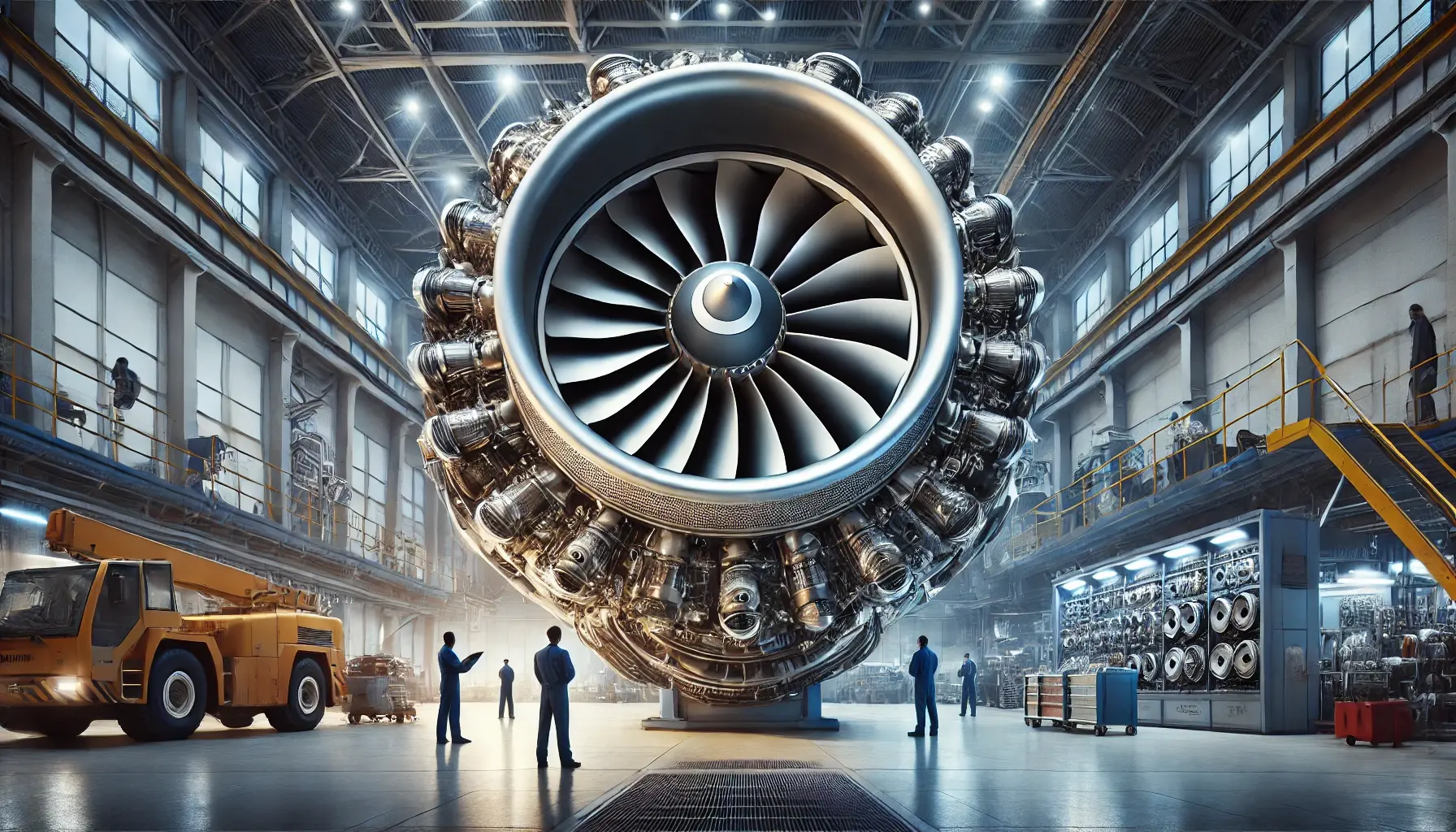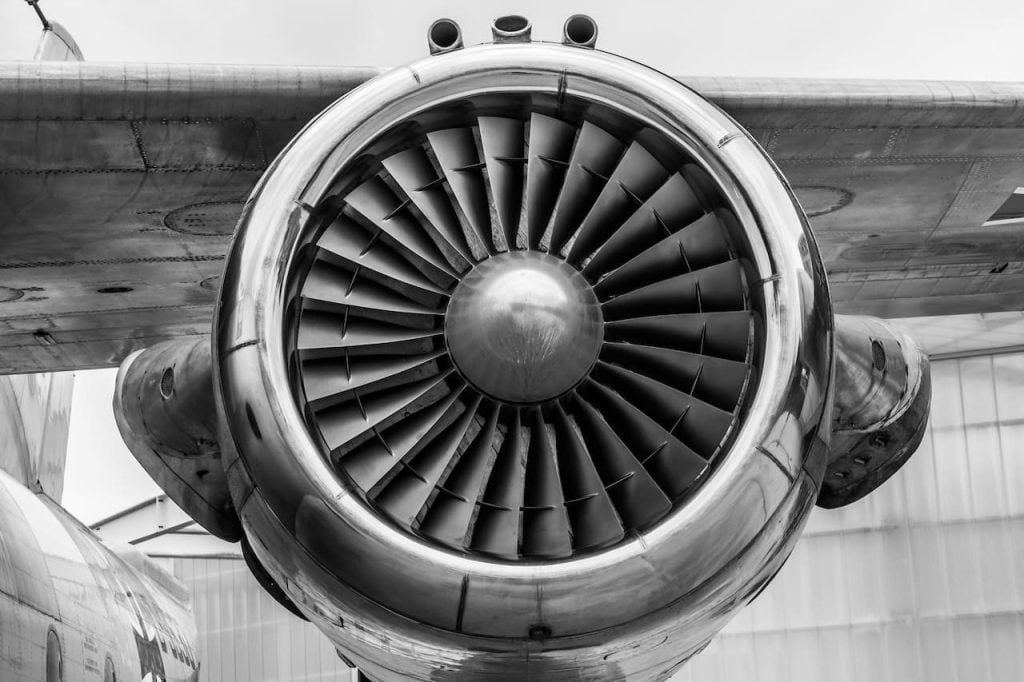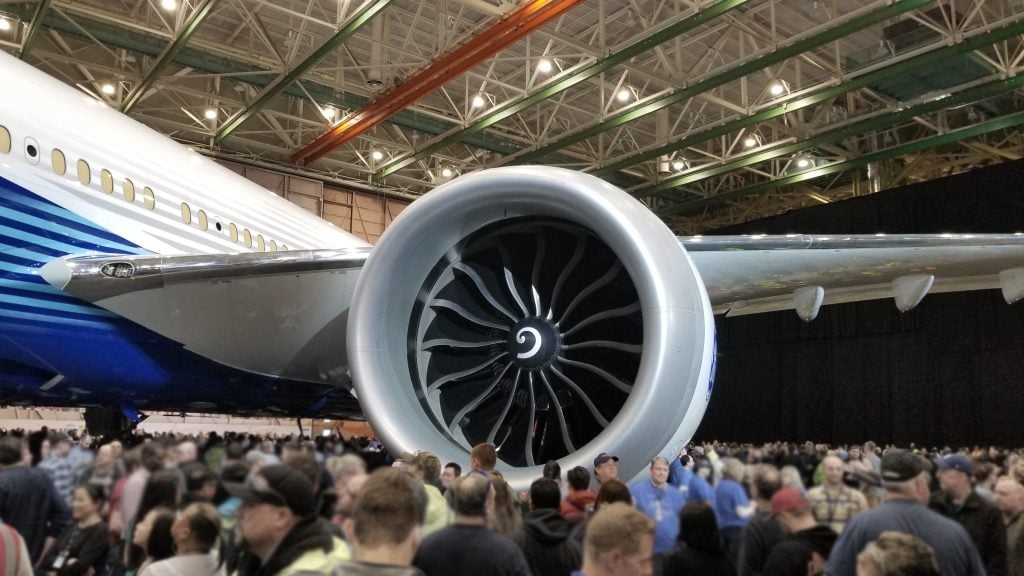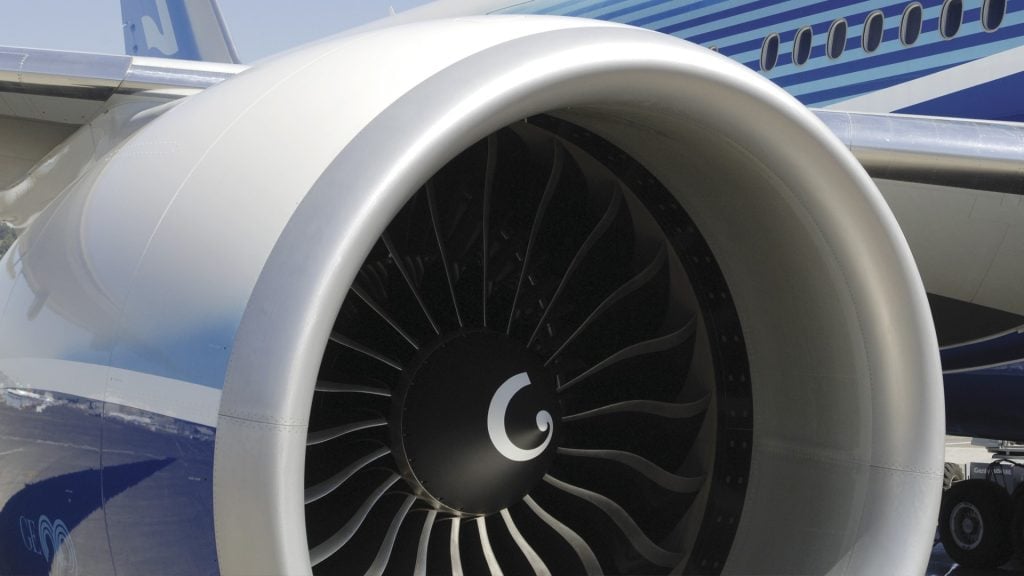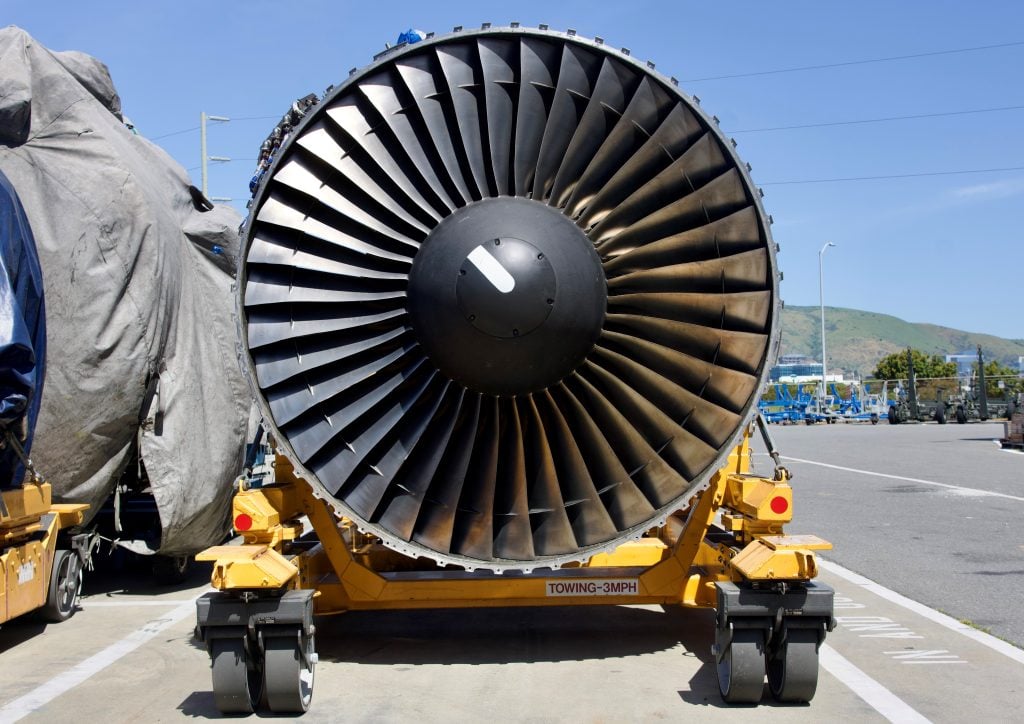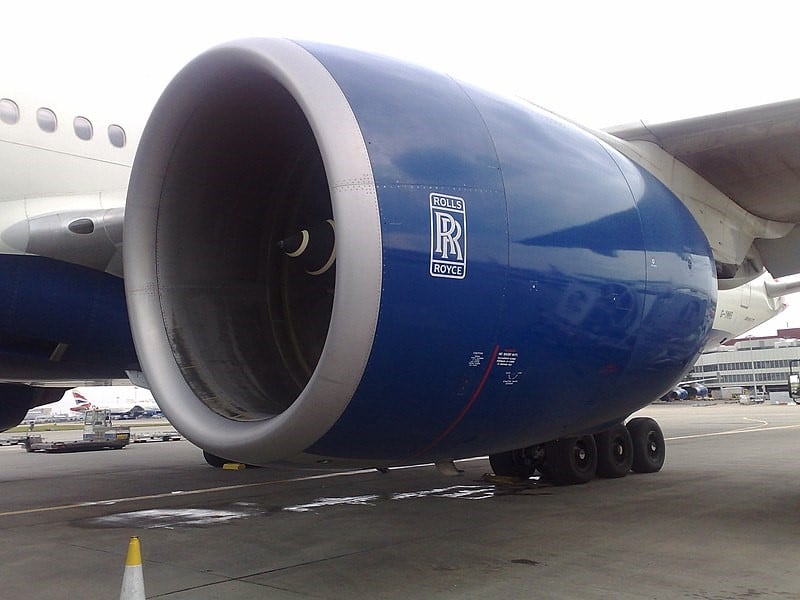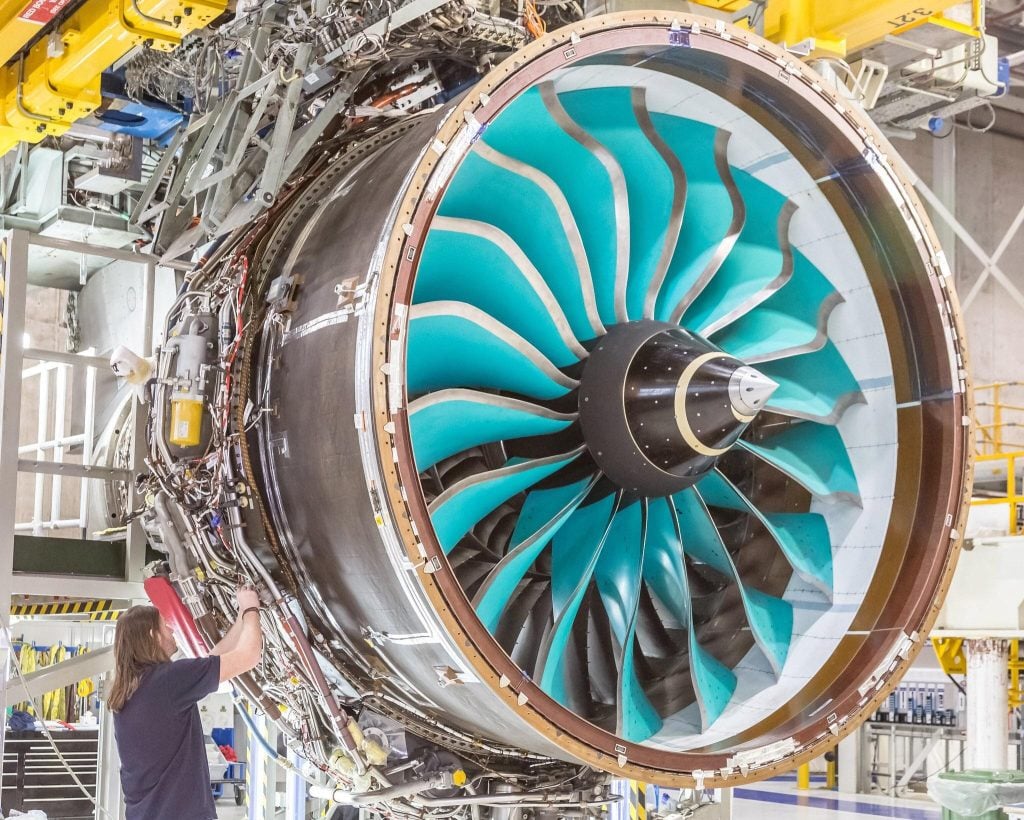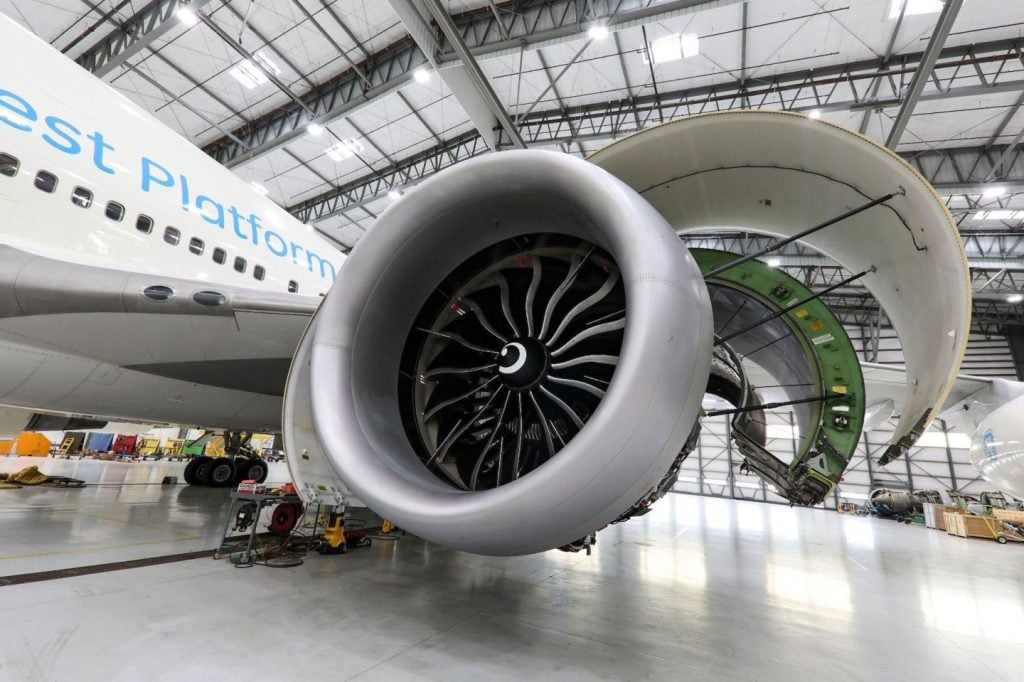In the realm of aviation, the design and development of aircraft engines are paramount considerations for any manufacturer. Powerful and efficient engines are the backbone that enable aircraft to soar higher, travel farther, and operate more economically – crucial factors for airlines seeking to optimize their operations and provide unparalleled service to passengers. As the industry continues to evolve, the quest for the 6 Most Powerful Aircraft Engines in the World has become an intense and dynamic arena, with leading manufacturers vying to push the boundaries of performance and efficiency.
6 Best Stealth Aircraft in the World 2024
1. General Electric GE9X
Undoubtedly, the most anticipated and powerful aircraft engine on the horizon is the General Electric GE9X. Although not yet in commercial service, this engine is slated to power the upcoming Boeing 777X aircraft, and its impressive capabilities have already generated significant buzz within the aviation community. Building upon the legacy of the renowned GE90 engine, the GE9X boasts an astounding maximum thrust of 134,300 lbf (pound-force), representing a remarkable 5% increase over its predecessor.
The key to the GE9X’s exceptional performance lies in its innovative design, which incorporates the use of advanced composite carbon-fiber materials. This lightweight yet durable construction has enabled the engine to achieve a 10% improvement in fuel efficiency without a substantial increase in size. However, for now, the engine is only certified for a maximum thrust of 105,000 lbf, leaving the door open for even more powerful variants of the 777X in the future.
Unfortunately, the debut of the GE9X has been delayed until at least 2024 due to ongoing certification challenges faced by Boeing for the 777X program. This means that aviation enthusiasts and airlines alike will have to wait a little longer to witness the true power and efficiency of this cutting-edge engine technology.
2. General Electric GE90
Closely following the GE9X in the ranks of the world’s most powerful aircraft engines is the venerable General Electric GE90 series. First introduced in 1995 with British Airways’ 777-200 aircraft, the GE90 has become a cornerstone of the Boeing 777 family, powering a wide range of variants, including the popular 777-300ER, 777-200LR, and 777F.
The latest iterations of the GE90, the GE90-115B and GE90-110B, are the true powerhouses of the lineup, capable of delivering a maximum thrust of 127,900 lbf and 110,000 lbf, respectively. These impressive figures, combined with their enhanced fuel efficiency, have enabled airlines to launch new long-haul routes and expand their services, pushing the boundaries of what was previously possible.
The GE90’s commercial success is undeniable, with over 2,500 orders for the engine to date. Its widespread adoption and proven track record have cemented the GE90’s status as a key contributor to the success of the Boeing 777, allowing airlines to transition from quad-engine aircraft to more efficient twin-engine designs. As the foundation for the cutting-edge GE9X, the GE90 is poised to remain a dominant force in the industry for years to come.
3. Pratt & Whitney PW4000-112
While General Electric may have captured the headlines with its powerful engine offerings, Pratt & Whitney has also made its mark in the world of high-thrust aircraft engines. The Pratt & Whitney PW4000-112 is a testament to the company’s engineering prowess, finding its way onto a diverse range of widebody aircraft, including the Airbus A330, Boeing 767, and Boeing 747.
Although the PW4000-112 is certified for a maximum thrust of 90,000 lbf, slightly lower than its GE counterparts, its widespread adoption and renowned reliability have made it an attractive option for airlines. The lower maintenance costs and availability of spare parts have been key factors in the engine’s continued popularity, even as newer, more powerful designs have emerged.
The PW4000-112 has also found a new lease on life, being re-engineered to power the Airbus A380 as part of the Engine Alliance GP7000 project, a joint venture between Pratt & Whitney and General Electric. While it has since been replaced on newer widebody aircraft, the PW4000-112 remains a reliable workhorse, ensuring its continued presence in the skies for years to come.
10 Most Advanced Radars in the World 2024
4. Rolls-Royce Trent XWB
Joining the ranks of the world’s most powerful aircraft engines is the Rolls-Royce Trent XWB, an exclusive powerplant for the Airbus A350 family. Available in two variants, the XWB-84 and XWB-97, the Trent XWB has established itself as a benchmark for efficiency and performance in the widebody aircraft segment.
The more powerful XWB-97 variant boasts an impressive maximum thrust of 97,000 lbf, while the smaller XWB-84 still packs a punch with 84,000 lbf of thrust. What sets the Trent XWB apart, however, is its exceptional efficiency, which has been instrumental in enabling the A350 to pioneer new frontiers in ultra-long-haul air travel.
The Trent XWB’s advanced design and cutting-edge technologies have allowed it to become one of the most fuel-efficient engines on the market, allowing airlines to undertake ambitious projects like Qantas’ “Project Sunrise” and Singapore Airlines’ non-stop flights from Singapore to New York. The versatility of the XWB-84 variant, in particular, has further solidified the engine’s reputation as a versatile and adaptable powerplant capable of powering a wide range of long-haul and regional routes.
5. Rolls-Royce Trent 800
While not the most powerful engine on this list, the Rolls-Royce Trent 800 deserves recognition for its significant contributions to the evolution of widebody aircraft propulsion. Introduced in 1996 with Thai Airways, the Trent 800 was one of the three engine options available for the first-generation Boeing 777 aircraft.
Boasting a maximum thrust of 95,000 lbf, the Trent 800 was a formidable powerplant in its own right, offering impressive performance and efficiency. Rolls-Royce also highlighted the engine’s lightweight design, which further enhanced the overall efficiency of the 777 platform.
Despite capturing a respectable 40% market share, the Trent 800’s reign was relatively short-lived, as it was not selected for the more powerful 777-300ER and 777-200LR variants, which exclusively featured General Electric engines. However, the Trent 800’s development and operational experience proved invaluable to Rolls-Royce, laying the groundwork for the company’s subsequent success with the Trent XWB and other cutting-edge engine designs.
6. Rolls-Royce UltraFan
As of November 2023, the Rolls-Royce UltraFan holds the title of the largest and most powerful jet engine in the world. It boasts a 140-inch fan and can deliver up to 64 megawatts of power. During static tests, it has achieved a peak thrust exceeding 85,000 pounds.
The UltraFan incorporates a geared turbofan with a variable pitch fan system, carbon composite fan blades, and is 10% more efficient compared to the previous Trent XWB model. Additionally, it has been successfully tested at full power using 100% Sustainable Aviation Fuel (SAF).
Honorable Mentions
While the engines discussed above have undoubtedly captured the spotlight for their sheer power and thrust, it’s worth acknowledging the contributions of several other high-efficiency aircraft engines that have played a significant role in advancing the industry.
The GEnx and Trent 1000 engines, powering the Boeing 787 Dreamliner, are prime examples of engines that prioritize fuel efficiency over pure thrust. Although their maximum thrust figures of around 75,000 lbf may not match the raw power of the engines mentioned earlier, these powerplants have been instrumental in enabling the Dreamliner’s exceptional range and environmental performance.
Similarly, the four-engine aircraft of the past, such as the Boeing 747-8 and Airbus A380, have been equipped with highly efficient engine options like the GEnx and GP7000, which prioritize fuel economy and emissions reduction over sheer brute force. While these engines may not boast the highest thrust ratings, their optimization for efficiency has been a crucial factor in the evolution of large, long-range commercial aircraft.
The Future of Aircraft Propulsion
As the aviation industry continues to evolve, the quest for the most powerful and efficient aircraft engines will undoubtedly remain a central focus for manufacturers. The ongoing collaboration between airframe designers and engine makers has proven to be a fruitful partnership, yielding exceptional results in terms of performance, fuel efficiency, and environmental sustainability.
The delayed introduction of the GE9X engine, for instance, highlights the intricate interplay between aircraft and engine development, where each component must be meticulously engineered to work in perfect harmony. This symbiotic relationship is expected to continue shaping the future of aircraft propulsion, as manufacturers strive to push the boundaries of what is possible.
Looking ahead, the industry may witness further advancements in engine technology, such as the integration of hybrid-electric or all-electric propulsion systems, which could revolutionize the way aircraft are powered. These innovative solutions have the potential to dramatically reduce emissions and fuel consumption, paving the way for a more sustainable future in aviation.
12 Top Navy Destroyers in the World 2024
Conclusion
The world of aircraft engines is a constantly evolving landscape, where the pursuit of power, efficiency, and innovation is an ongoing battle among the industry’s leading manufacturers. From the towering might of the GE9X to the proven reliability of the GE90 and the cutting-edge efficiency of the Rolls-Royce Trent XWB, the engines highlighted in this article represent the pinnacle of aircraft propulsion technology.
As the aviation industry continues to push the boundaries of what is possible, the role of these powerful and advanced engines will only become more critical. Whether it’s enabling new long-haul routes, improving fuel economy, or reducing environmental impact, the most powerful aircraft engines of today and tomorrow will be the driving force behind the industry’s progress and success.
FAQs
1. What is the most successful aircraft engine?
CFM56®
2. Which engine is most powerful in world?
The Wärtsilä-Sulzer RTA96-C turbocharged two-stroke diesel engine stands as the largest and most powerful production internal combustion engine globally. It delivers a peak output of 84.42 MW (113,000 hp) and has a displacement of 1,820 liters (110,195 cubic inches).
3. Which plane has no engine?
Glider
4. What is the most powerful aircraft engine currently in service?
The most powerful aircraft engine currently in service is the General Electric GE90-115B, which can deliver a maximum thrust of 127,900 lbf. This engine powers the Boeing 777-300ER, 777-200LR, and 777F models.
5. What is the most powerful aircraft engine in development?
The most powerful aircraft engine in development is the General Electric GE9X, which is slated to power the upcoming Boeing 777X. The GE9X is capable of producing a maximum thrust of 134,300 lbf, making it the most powerful commercial aircraft engine ever built.
